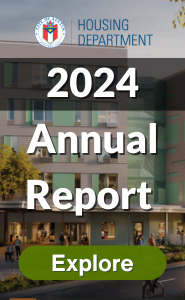Accessory Dwelling Unit is a small dwelling on the same grounds as and ancillary to a single-family home. Affordable Housing is housing in which the household pays no more than 30% of its income for gross housing costs, including utilities.
Affordability Period is the length of time that a housing unit is required to maintain its below-market rent or sales price.
Austin Housing Finance Corporation (AHFC) is a public, non-profit corporation and instrumentality of the City of Austin under the provisions of the Texas Housing Finance Corporation Act, Chapter 394, and Local Government Code. The Austin City Council serves as the AHFC’s Board of Directors. AHFC’s primary functions are to issue single-family and multi-family bonds for the financing of reasonably priced housing and assist the City in the delivery of reasonably priced housing programs using federal funds.
CodeNEXT is the City’s first comprehensive rewrite of its Land Development Code In over 20 years. The new code will determine how land can be developed or zoned throughout the city.
Cooperative (co-op) Housing is housing where residents own shares and occupy a specific unit.
Deep Affordability is the level of affordability needed to serve extremely low income households.
Density Bonus is a regulation that allows more (height, density, etc.) than is permitted by base zoning in exchange for certain public benefits.
Extremely Low Income describes households whose income is at or below 30% of the area median family income.
Fair Housing Act is a 1968 federal act intended to protect the buyer or renter of a dwelling from seller or landlord discrimination. Its primary prohibition makes it unlawful to refuse to sell, rent to, or negotiate with any person because of that person’s Inclusion In a protected class (such as race, color, religion, etc.).
High Frequency Transit are routes providing service every 15 minutes (or better) throughout most of the day on weekdays and Saturdays.
High Opportunity Areas typically include access to jobs, transportation, education, and a healthy environment. These factors can affect a person’s social mobility, health, and access to employment.
Homestead Preservation Districts (HPDs) are areas in which taxes are reinvested to create or preserve affordable housing.
Homestead Preservation District Tax Reinvestment Zones are financing tools that can be used in HPDs to fund the creation or preservation of affordable housing by setting aside a portion of the HPD’s increased assessed tax value over a certain baseline.
Housing First is an approach to housing that focuses on quickly housing people who are experiencing homelessness first, and then providing support services as needed. A core element is lower tenant screening criteria regarding behaviors like sobriety, criminal history, or credit history.
Imagine Austin Comprehensive Plan is the city’s 30-year plan for growth and development. The plan was developed based on extensive community input and includes goals for issues beyond land use, including the economy, health, affordability, transportation, and the environment.
Imagine Austin Activity Centers and Corridors are areas identified in the Imagine Austin Comprehensive Plan as appropriate for increased concentrations of jobs, residents, and services.
lnclusionary Zoning is a regulation that mandates the provision of housing units at below-market prices.
Income-Restricted Affordable Housing refers to housing for which renters or buyers must meet specific income guidelines to be able to live in the unit. This guideline is generally defined in terms of a percent of median family income (MFI).
Low Income describes households whose income is at or below 80% of the area median family income.
Market rate is the price one must pay to purchase or rent a home on the open real estate market.
Median Family Income (MFI) is the amount of money earned by a family in a metropolitan statistical area that divides the income distribution of all families in that area into two equal parts - half having incomes above that amount and half below.
Micro-Unit is a small, self-contained living space designed to accommodate basic human needs.
Missing Middle is the range of dwelling types between detached homes and mid-rise apartments.
Moderate Income describes households whose income is between 81% and 120% of the area median family income.
Neighborhood Housing and Community Development (NHCD) is a City of Austin department focusing on the production of affordable housing and community development.
Permanent Supportive Housing (PSH) is housing that pairs supportive services with a housing unit and is especially effective for people who have been experiencing chronic homelessness and have multiple barriers to housing (like mental illness, addiction, disabilities, etc).
Planned Unit Development (PUD) is a zoning district that describes large or complex developments being planned as a single continuous project, or projects that require greater design flexibility than typical zoning allows.
S.M.A.R.T. Housing stands for safe, Mixed Income, Accessible, Reasonably Priced, Transit-Oriented housing. This City of Austin policy is designed to stimulate the production of housing for low- and moderateincome residents by providing fee waivers and expedited permit review to developers in exchange for building housing that meets the program criteria. Subsidized Housing is housing assisted with public funding for low-to moderate-income persons and families.
Tax Increment Financing (TIF) is a financing tool that can be used to encourage development within a certain area. A property tax baseline is set for the area and the increment of taxes that are collected each year above that baseline is used to fund development in the area.
Workforce Housing is housing affordable to households earning 60% to 100% of the area median family income.



